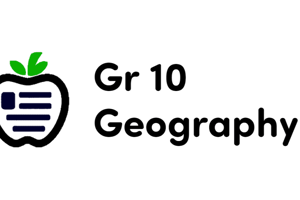Podcast
Questions and Answers
What is the asthenosphere?
What is the asthenosphere?
- A semiliquid layer beneath tectonic plates (correct)
- A solid layer of Earth
- The inner core
- The outer core
What is oceanic crust?
What is oceanic crust?
Crust found under the oceans.
What does continental drift refer to?
What does continental drift refer to?
When all the continents came together.
What is a fossil?
What is a fossil?
What is sea floor spreading?
What is sea floor spreading?
What is subduction?
What is subduction?
What occurs at a divergent boundary?
What occurs at a divergent boundary?
What occurs at a convergent boundary?
What occurs at a convergent boundary?
What happens at a transform boundary?
What happens at a transform boundary?
Why do Earth’s plates move?
Why do Earth’s plates move?
What are faults?
What are faults?
Continental crust is thicker than oceanic crust.
Continental crust is thicker than oceanic crust.
Mountain formation can occur when?
Mountain formation can occur when?
What is Earth's only liquid layer?
What is Earth's only liquid layer?
Who is Alfred Wegener?
Who is Alfred Wegener?
What is Earth's outermost layer?
What is Earth's outermost layer?
What does the theory of plate tectonics believe?
What does the theory of plate tectonics believe?
What is Pangea?
What is Pangea?
Flashcards are hidden until you start studying
Study Notes
Plate Tectonics Overview
- Tectonic plates float on the asthenosphere, a semiliquid layer beneath the Earth's crust.
- Oceanic crust is specifically located under the oceans, whereas continental crust is found above water and is thicker than oceanic crust.
Continental Drift and Fossils
- The concept of continental drift refers to the historical merging of all continents into a single landmass.
- Fossils provide evidence of ancient organisms, aiding in the understanding of Earth's geological history and the movement of continents.
Sea Floor Spreading and Subduction
- Sea floor spreading occurs at mid-ocean ridges where molten material emerges, adds new layers to the ocean floor, and then cools and hardens.
- Subduction is the process where the ocean floor descends beneath a deep ocean trench and returns to the mantle.
Plate Boundaries
- Divergent boundaries involve tectonic plates moving apart, creating new crust.
- Convergent boundaries occur when plates collide, which can lead to mountain formation.
- Transform boundaries feature plates sliding past each other, causing earthquakes along faults.
Earth's Lithosphere and Mantle Dynamics
- The lithosphere consists of Earth's outermost layer (the crust) and the upper mantle.
- Plates are driven by large convection currents within the mantle and the process of subduction.
Historical Figures and Theories
- Alfred Wegener is credited with developing the theory that led to our understanding of plate tectonics.
- The theory of plate tectonics posits that continents are in continuous, slow motion.
- Pangea was a supercontinent that existed over 225 million years ago, consisting of all Earth's landmasses joined together.
Unique Earth Features
- The outer core is the only liquid layer of Earth, existing beneath the solid mantle and above the solid inner core.
Studying That Suits You
Use AI to generate personalized quizzes and flashcards to suit your learning preferences.




